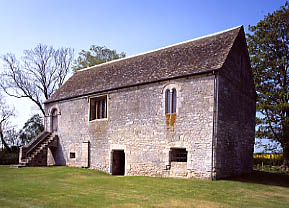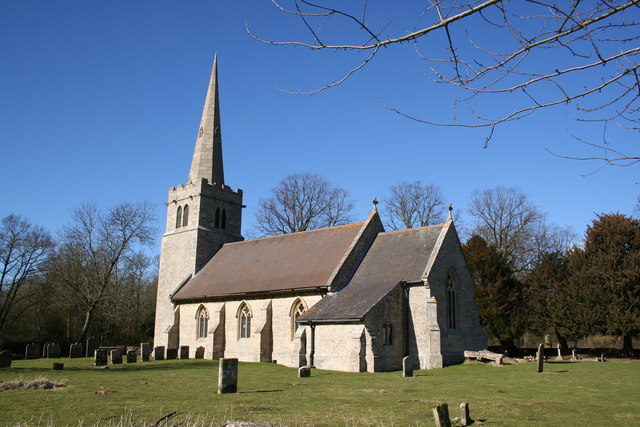|
Ashby De La Launde
Ashby de la Launde is a small village, part of the civil parish of Ashby de la Launde and Bloxholm, in the North Kesteven district of Lincolnshire, England. The village is situated just west of Digby, and east of the A15 and B1191 roads. History In ''Domesday Book'' the village is called "Ashebi", comprising two manors, in the possession of Ralph Paynel and Kolsveinn of Lincoln. The Lord of the Manor, William de Essheby, (or ''Ashby''), founded the Knights Templar preceptory Temple Bruer, around 1150, joining the order himself, and increasing his endowment to it before his death. In time, the preceptory, became the second wealthiest in Britain, funding the Crusades from sheep rearing and wool exports to Europe. A descendant, also named William de Essheby, gave the Knights Templar the advowson of the village's church, dedicated to Saint Hybald, in return for the Templars providing, for ever more, a chaplain to perform divine service in the private chapel, dedicated to St. ... [...More Info...] [...Related Items...] OR: [Wikipedia] [Google] [Baidu] |
North Kesteven
North Kesteven is a local government district in Lincolnshire, England. The district is located to the east of Nottinghamshire, north-east of Leicestershire and south of the city of Lincoln. Its council, North Kesteven District Council, is based in Sleaford in the former offices of Kesteven County Council. Notable towns and villages in the district include Cranwell, Metheringham, North Hykeham, Sleaford and Waddington. History The district was formed on 1 April 1974, under the Local Government Act 1972. It was a merger of the previous urban district of Sleaford, along with East Kesteven Rural District and North Kesteven Rural District, all from the administrative county of Kesteven, which was abolished. Geography North Kesteven borders West Lindsey (along the Foss Dyke and the River Witham) and the city of Lincoln to the north, East Lindsey to the north-east (along the River Witham), Boston (borough) to the east, South Holland to the south-east, South Kesteven ... [...More Info...] [...Related Items...] OR: [Wikipedia] [Google] [Baidu] |
Saint Hybald
Saint Hybald (fl. c. 664 – c. 690), also known as Higbald, Hibald or Hygbald, was a 7th-century Saxon saint. His feastdays are 18 September and 14 December (Orthodox). Life and legacy The Venerable Bede, in his ''Ecclesiastical History'', describes St Hybald as a "most holy and continent man who was an abbot in Lindsey". It is conjectured, in the ''Dictionary of Christian Biography'' (1877–87), that this is the Benedictine abbey at Bardney, then in the old Kingdom of Lindsey, now Lincolnshire. In 679, Osthryth, queen of Mercia, sought to move the remains of her uncle, St Oswald, to Bardney, Catholic Encyclopedia: St Oswald but the monks refused to accept the body because Oswald, as king of Northumbria, had once conquered Lindsey. The remains were locked outside the abbey but the appearance of a mysterious beam of light, that night, led the monks to reconsider. (as ) Hybald was also a friend of Saint Chad, and, had a prophetic vision of his death. He later, followe ... [...More Info...] [...Related Items...] OR: [Wikipedia] [Google] [Baidu] |
Stables
A stable is a building in which livestock, especially horses, are kept. It most commonly means a building that is divided into separate stalls for individual animals and livestock. There are many different types of stables in use today; the American-style barn, for instance, is a large barn with a door at each end and individual stalls inside or free-standing stables with top and bottom-opening doors. The term "stable" is also used to describe a group of animals kept by one owner, regardless of housing or location. The exterior design of a stable can vary widely, based on climate, building materials, historical period and cultural styles of architecture. A wide range of building materials can be used, including masonry (bricks or stone), wood and steel. Stables also range widely in size, from a small building housing one or two animals to facilities at agricultural shows or race tracks that can house hundreds of animals. History The stable is typically historically the ... [...More Info...] [...Related Items...] OR: [Wikipedia] [Google] [Baidu] |
Landed Gentry
The landed gentry, or the ''gentry'', is a largely historical British social class of landowners who could live entirely from rental income, or at least had a country estate. While distinct from, and socially below, the British peerage, their economic base in land was often similar, and some of the landed gentry were wealthier than some peers. Many gentry were close relatives of peers, and it was not uncommon for gentry to marry into peerage. It is the British element of the wider European class of gentry. With or without noble title, owning rural land estates often brought with it the legal rights of lord of the manor, and the less formal name or title of ''squire'', in Scotland laird. Generally lands passed by primogeniture, and the inheritances of daughters and younger sons were in cash or stocks, and relatively small. Typically the gentry farmed some of their land, as well as exploiting timber, minerals such as coal, and owning mills and other sources of income, b ... [...More Info...] [...Related Items...] OR: [Wikipedia] [Google] [Baidu] |
Parson
A parson is an ordained Christian person responsible for a small area, typically a parish. The term was formerly often used for some Anglican clergy and, more rarely, for ordained ministers in some other churches. It is no longer a formal term denoting a specific position within Anglicanism, but has some continued historical and colloquial use. In the pre-Reformation church, a parson was the priest of an independent parish church, that is, a church not under the control of a larger ecclesiastical or monastic organization. The term is similar to rector and is in contrast to a vicar, a cleric whose revenue is usually, at least partially, appropriated by a larger organisation. Today the term is normally used for some parish clergy of non-Roman Catholic churches, in particular in the Anglican tradition in which a parson is the incumbent of a parochial benefice: a parish priest or a rector; in this sense a parson can be compared with a vicar. The title ''parson'' can be applied to c ... [...More Info...] [...Related Items...] OR: [Wikipedia] [Google] [Baidu] |
Reverend John William King
The Reverend is an honorific style most often placed before the names of Christian clergy and ministers. There are sometimes differences in the way the style is used in different countries and church traditions. ''The Reverend'' is correctly called a ''style'' but is often and in some dictionaries called a title, form of address, or title of respect. The style is also sometimes used by leaders in other religions such as Judaism and Buddhism. The term is an anglicisation of the Latin ''reverendus'', the style originally used in Latin documents in medieval Europe. It is the gerundive or future passive participle of the verb ''revereri'' ("to respect; to revere"), meaning "ne who isto be revered/must be respected". ''The Reverend'' is therefore equivalent to ''The Honourable'' or ''The Venerable''. It is paired with a modifier or noun for some offices in some religious traditions: Lutheran archbishops, Anglican archbishops, and most Catholic bishops are usually styled ''The Mo ... [...More Info...] [...Related Items...] OR: [Wikipedia] [Google] [Baidu] |
Restoration Of Charles II
The Restoration of the Stuart monarchy in the kingdoms of England, Scotland and Ireland took place in 1660 when King Charles II returned from exile in continental Europe. The preceding period of the Protectorate and the civil wars came to be known as the Interregnum (1649–1660). The term ''Restoration'' is also used to describe the period of several years after, in which a new political settlement was established. It is very often used to cover the whole reign of King Charles II (1660–1685) and often the brief reign of his younger brother King James II (1685–1688). In certain contexts it may be used to cover the whole period of the later Stuart monarchs as far as the death of Queen Anne and the accession of the Hanoverian King George I in 1714. For example, Restoration comedy typically encompasses works written as late as 1710. The Protectorate After Richard Cromwell, Lord Protector from 1658 to 1659, ceded power to the Rump Parliament, Charles Fleetwood and ... [...More Info...] [...Related Items...] OR: [Wikipedia] [Google] [Baidu] |
Oliver Cromwell
Oliver Cromwell (25 April 15993 September 1658) was an English politician and military officer who is widely regarded as one of the most important statesmen in English history. He came to prominence during the 1639 to 1651 Wars of the Three Kingdoms, first as a senior commander in the Parliamentarian army and then as a politician. A leading advocate of the execution of Charles I in January 1649, which led to the establishment of the Republican Commonwealth of England, Scotland and Ireland, he ruled as Lord Protector from December 1653 until his death in September 1658. Cromwell nevertheless remains a deeply controversial figure in both Britain and Ireland, due to his use of the military to first acquire, then retain political power, and the brutality of his 1649 Irish campaign. Educated at Sidney Sussex College, Cambridge, Cromwell was elected MP for Huntingdon in 1628, but the first 40 years of his life were undistinguished and at one point he contemplated emigrati ... [...More Info...] [...Related Items...] OR: [Wikipedia] [Google] [Baidu] |
Edward Ayscough (died 1668)
Sir Edward Ayscough (c. 1618 – 13 August 1668) was an English politician who sat in the House of Commons from 1659 to his death. Ayscough was born at South Kelsey, Lincolnshire, the son of Sir Edward Ayscough. He was educated at Westminster School and at Lincoln. He was admitted at Sidney Sussex College, Cambridge on 16 September 1635 at the age of 17. In 1659, he was elected Member of Parliament for Great Grimsby for the Third Protectorate Parliament. He was knighted in 1660. In 1665 he was High Sheriff of Lincolnshire This is a list of High Sheriffs of Lincolnshire. The High Sheriff is the oldest secular office under the Crown. Formerly the High Sheriff was the principal law enforcement officer in the county but over the centuries most of the responsibilit .... Ayscough died in 1668 at the age of approximately 50. He was the father of Edward Ayscough who was also MP for Grimsby. References 1610s births 1668 deaths People from West Lindsey District People ... [...More Info...] [...Related Items...] OR: [Wikipedia] [Google] [Baidu] |
Great Grimsby (UK Parliament Constituency)
Great Grimsby is a constituency in North East Lincolnshire represented in the House of Commons of the Parliament of the United Kingdom since December 2019 by Lia Nici of the Conservative Party. Constituency profile Fishing is a significant sector in Grimsby which is a deprived area. These factors meant the constituency voted strongly to leave the EU in 2016. Current boundaries The present constituency follows the boundaries of the old Borough of Great Grimsby, which was abolished when the former county of Humberside was divided into four unitary authorities in 1996. From the 2010 general election new boundaries took effect, but the Boundary Commission's review led only to minimal changes, aligning the constituency boundaries with present ward boundaries so the seat still has electoral wards: *East Marsh, Freshney, Heneage, Park, Scartho, South, West Marsh and Yarborough. History The constituency has been represented since the first House of Commons was assembled in the Mode ... [...More Info...] [...Related Items...] OR: [Wikipedia] [Google] [Baidu] |







